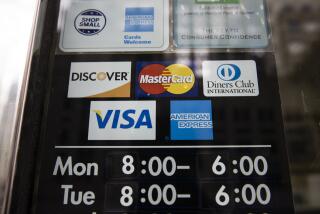Growing bankruptcy filings a grim omen
WASHINGTON — American consumers’ bankruptcy filings jumped 15% in February from the previous month and a steeper rise is looming because of the sub-prime mortgage crisis, the American Bankruptcy Institute said Monday.
Consumer bankruptcy filings in February totaled 76,120, up from 66,050 recorded in January, the nonpartisan research group said.
The February number was 37% higher than in the same month a year ago, according to the institute.
“February’s bankruptcy spike -- the highest single month since the 2005 [bankruptcy] law changes -- forecasts the start of more to come for the balance of 2008,” said Samuel Gerdano, the institute’s executive director.
“It is probably too early to attribute the current trend to the mortgage crisis. But if it continues, as it is certainly expected to with adjustable-rate mortgages resetting, it could add to the bankruptcy rate,” Gerdano said.
The institute is forecasting more than 1 million consumer bankruptcies in 2008, compared with about 800,000 in 2007, mostly the result of heavy household debt. But the 2008 estimate could go even higher “if this contagion affecting the home mortgage market continues,” Gerdano said.
Last week, Senate Republicans blocked a Democratic-written bill that would change federal bankruptcy laws to curb rising home foreclosures.
The legislation, which lawmakers said might be reconsidered in coming days, would let bankruptcy judges reduce mortgage amounts to reflect the current fair value of the home in Chapter 13 bankruptcy proceedings. The White House threatened to veto the bill, calling it too costly.
In a Chapter 13 bankruptcy, a consumer typically must budget some future earnings to repay unsecured creditors. However, secured debt -- such as a home mortgage -- cannot be modified under current Chapter 13 law, Gerdano said.
The institute is also seeing an increase in business bankruptcies, which account for a tiny percentage of the total.
“Here the scenario is a restriction in the flow of credit to troubled businesses,” Gerdano said. “In recent years, there was almost excess liquidity, which propped up a number of businesses and let them stave off a day of reckoning.”
More to Read
Inside the business of entertainment
The Wide Shot brings you news, analysis and insights on everything from streaming wars to production — and what it all means for the future.
You may occasionally receive promotional content from the Los Angeles Times.










